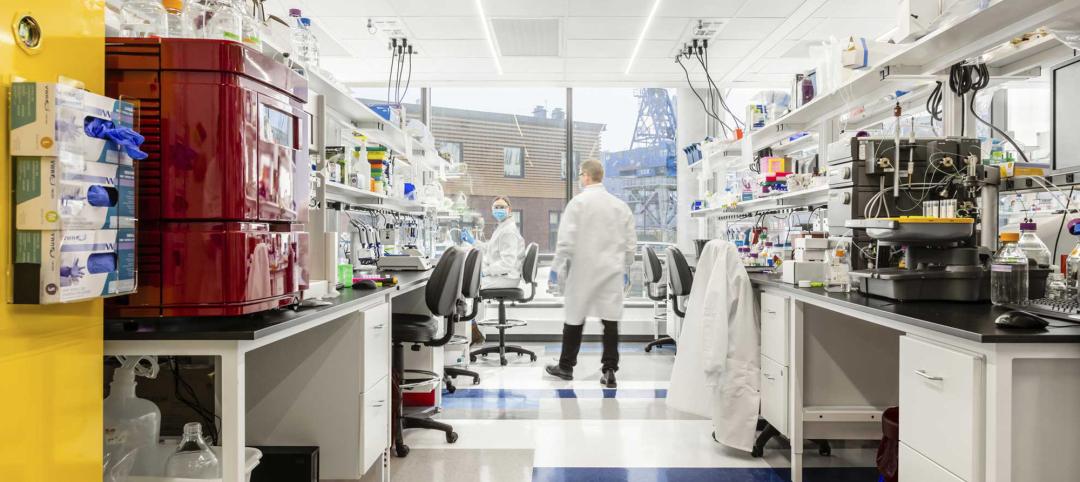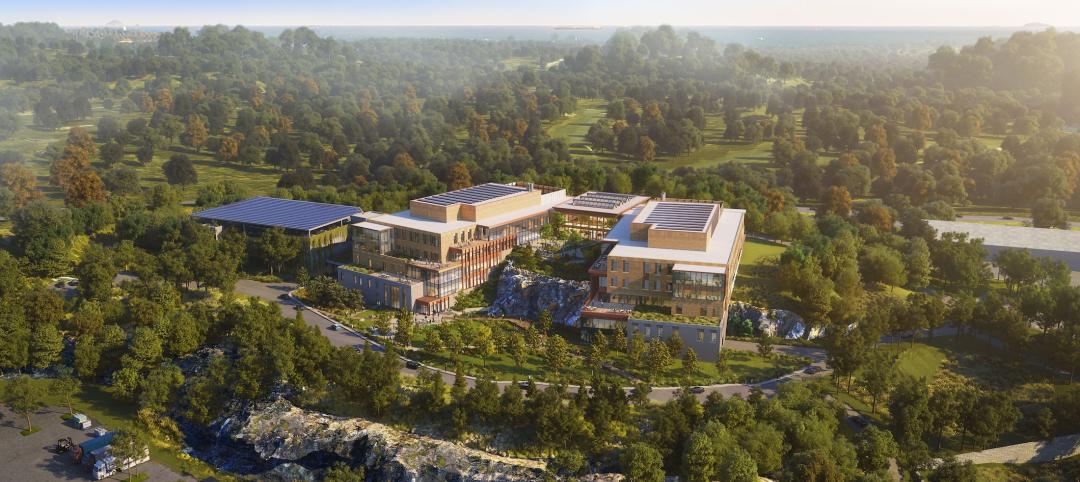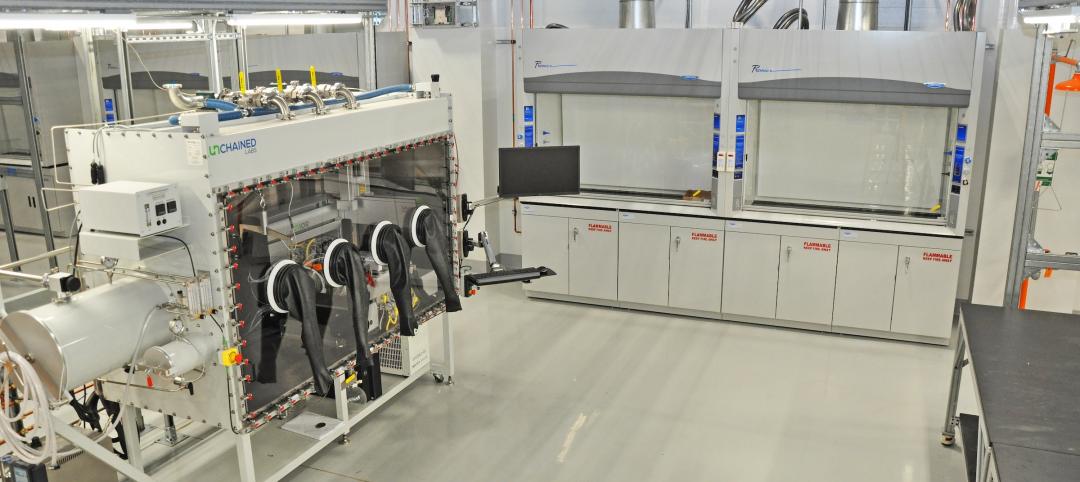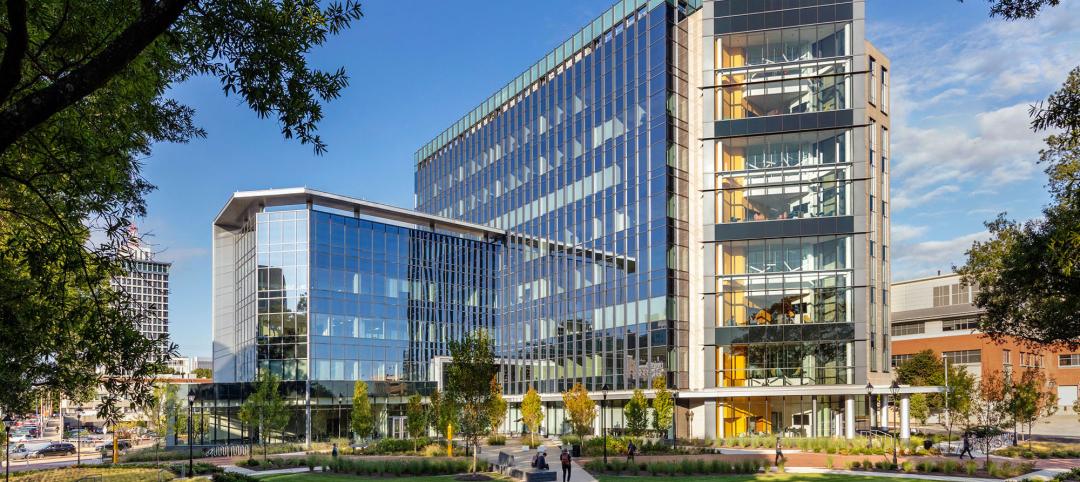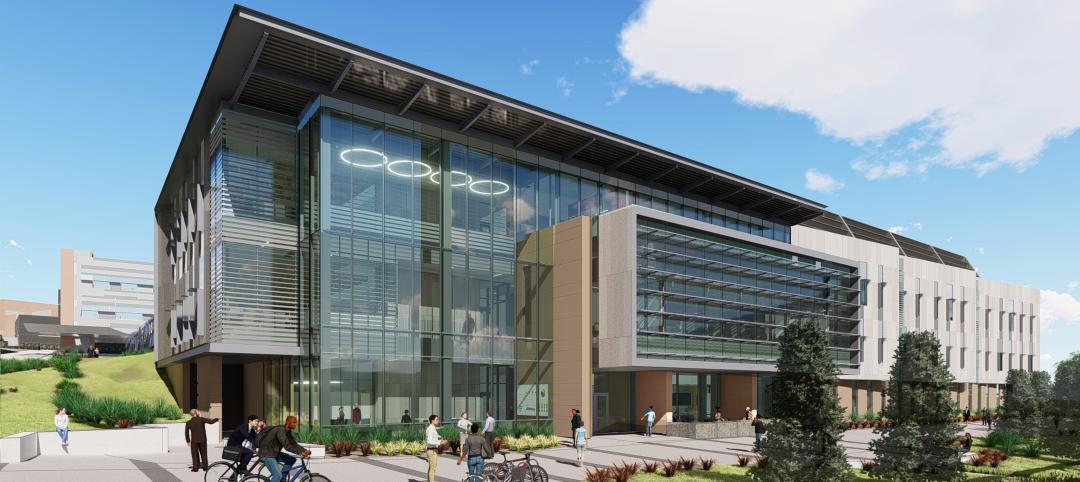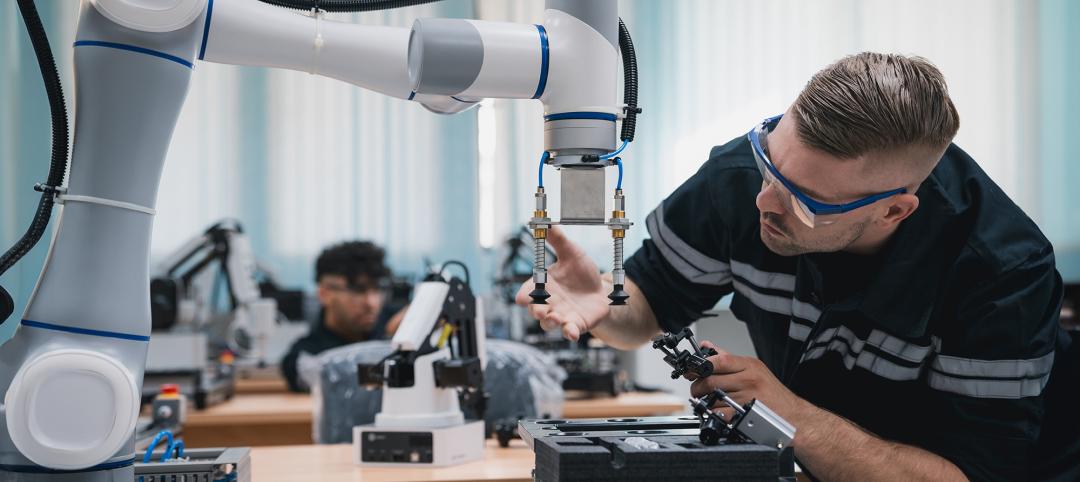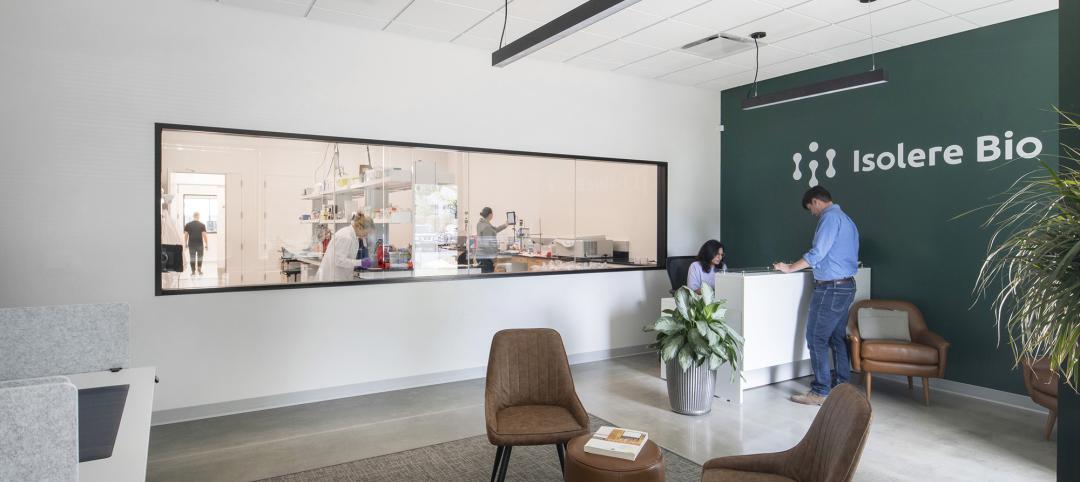In New Brunswick, N.J., a life sciences development that’s now underway aims to bring together academics and researchers to work, learn, and experiment under one roof.
HELIX Health + Life Science Exchange is an innovation district under development on a four-acre downtown site. At $731 million, HELIX, which will be built in three phases, represents New Jersey’s largest-ever investment in life sciences and medical education, according to a press statement.
SJP Properties, in collaboration with New Brunswick Development Corporation (DEVCO), recently unveiled plans for H-2—HELIX’s second phase. A mixed-use, 600,000-sf building, H2 will include build-to-suit lab and office space that can serve a range of uses for large corporate life sciences and technology company tenants. HDR is the lead architect for H-2, and JLL is the building’s leasing agent.
Next to Rutgers University and across from the city’s train station, the 574,000-sf H-1, the development’s first phase, will include the New Jersey Innovation HUB, the new home of Rutgers Robert Wood Johnson Medical School, and a Rutgers translational research facility equipped with a variety of labs to advance the work of 80 research teams and help improve individual and public health. H-1’s two-story ground floor will feature publicly accessible amenities and kiosks, such as a 10,000-sf market hall with food options and a 3,000-sf restaurant. H-1 is currently under construction.
H-3, the final phase of HELIX, is proposed as a 42-story mixed-use building with office space and 220 housing units.
HELIX tenants will have access to the New Brunswick train station. In line for a $49 million renovation, the station will provide access to both NJ TRANSIT, operating nearly 100 train stops in the city each day, and Amtrak.
HELIX also will be in proximity to the headquarters and regional offices of several major health, pharmaceutical, and life sciences companies, including those of Johnson & Johnson, Bristol Myers Squibb, and Ascendia Pharmaceuticals. In addition to next-door neighbor Rutgers University, HELIX will be within an hour’s drive to several colleges and universities, including Princeton University, University of Pennsylvania, and Columbia University.
Related Stories
Laboratories | Apr 22, 2024
Why lab designers should aim to ‘speak the language’ of scientists
Learning more about the scientific work being done in the lab gives designers of those spaces an edge, according to Adrian Walters, AIA, LEED AP BD+C, Principal and Director of SMMA's Science & Technology team.
Laboratories | Apr 15, 2024
HGA unveils plans to transform an abandoned rock quarry into a new research and innovation campus
In the coastal town of Manchester-by-the-Sea, Mass., an abandoned rock quarry will be transformed into a new research and innovation campus designed by HGA. The campus will reuse and upcycle the granite left onsite. The project for Cell Signaling Technology (CST), a life sciences technology company, will turn an environmentally depleted site into a net-zero laboratory campus, with building electrification and onsite renewables.
Laboratories | Apr 12, 2024
Life science construction completions will peak this year, then drop off substantially
There will be a record amount of construction completions in the U.S. life science market in 2024, followed by a dramatic drop in 2025, according to CBRE. In 2024, 21.3 million sf of life science space will be completed in the 13 largest U.S. markets. That’s up from 13.9 million sf last year and 5.6 million sf in 2022.
Sustainability | Mar 21, 2024
World’s first TRUE-certified building project completed in California
GENESIS Marina, an expansive laboratory and office campus in Brisbane, Calif., is the world’s first Total Resource Use and Efficiency (TRUE)-certified construction endeavor. The certification recognizes projects that achieve outstanding levels of resource efficiency through waste reduction, reuse, and recycling practices.
Adaptive Reuse | Mar 7, 2024
3 key considerations when converting a warehouse to a laboratory
Does your warehouse facility fit the profile for a successful laboratory conversion that can demand higher rents and lower vacancy rates? Here are three important considerations to factor before proceeding.
University Buildings | Feb 21, 2024
University design to help meet the demand for health professionals
Virginia Commonwealth University is a Page client, and the Dean of the College of Health Professions took time to talk about a pressing healthcare industry need that schools—and architects—can help address.
Urban Planning | Feb 5, 2024
Lessons learned from 70 years of building cities
As Sasaki looks back on 70 years of practice, we’re also looking to the future of cities. While we can’t predict what will be, we do know the needs of cities are as diverse as their scale, climate, economy, governance, and culture.
Laboratories | Feb 5, 2024
DOE selects design-build team for laboratory focused on clean energy innovation
JE Dunn Construction and SmithGroup will construct the 127,000-sf Energy Materials and Processing at Scale (EMAPS) clean energy laboratory in Colorado to create a direct path from lab-scale innovations to pilot-scale production.
Laboratories | Jan 25, 2024
Tactical issues for renovating university research buildings
Matthew Plecity, AIA, ASLA, Principal, GBBN, highlights the connection between the built environment and laboratory research, and weighs the benefits of renovation vs. new construction.
Laboratories | Jan 22, 2024
Speculative vs purpose-built labs: Pros and cons
Hanbury's George L. Kemper, AIA and R. David Cole, AIA share the unique advantages and challenges of both spec. and purpose-build labs.



